How Moisture Accelerates Masonry Deterioration
In a blog article, here on our website, a few weeks back, we talked about several different factors that lead to deterioration in masonry construction. One of those items that causes deterioration of masonry is moisture exposure.
Moisture Exposure
A few weeks back, in a similar article that discussed the causes of masonry deterioration, we talked about material porosity. Today’s article discusses exposure to moisture and it sounds similar, but it’s actually a little bit different. There is a correlation between these two different topics though. An item or material which is exposed to moisture and has high porosity will be even more affected whereas a material that has porosity yet has very little exposure moisture will not be nearly as affected. So there’s a relationship and a correlation, but these are two different issues. Passive building systems can be put in place to deter or limit a masonry material’s exposure to moisture.
The picture below shows a privacy wall or a garden wall. People often refer to these types of walls by other names like haha walls, knee walls, or screen walls, but those types of walls are actually all slightly different from this. If this wall was made without mortar, as commonly found in country parts of the USA’s eastern Appalachian areas, it could be a dry stone or dry stack wall.
In this case the wall is build with a rounded rock type stone which is rarely ever built without mortar as the round-ish shape of this collected stone (like river rock) must be shaped into at least a partially ashlar form to be self-sustaining in a drystack, in most cases.
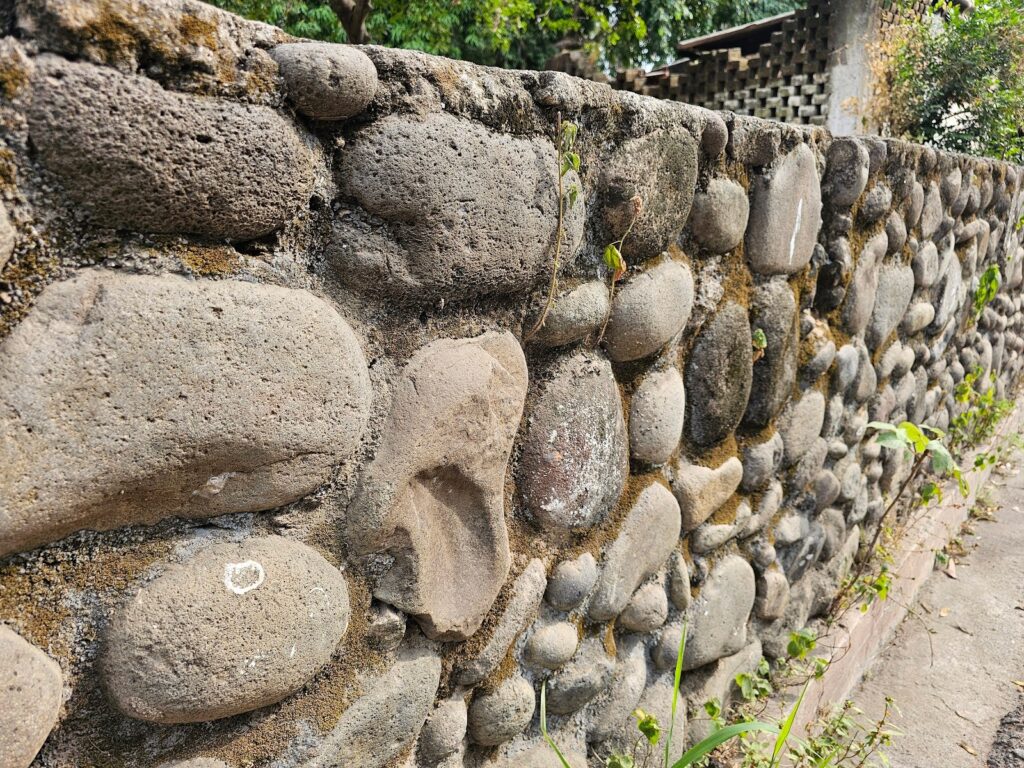
By comparison, to moisture exposure, material porosity cannot be changed by the installation of other passive building systems. And materials porosity is basically constant unless it is directly covered. Even though when an application such as a sealer or a chemical covering is applied, the material itself doesn’t really change, only the surface conditions are actually being modified. In most cases. Some liquid applications might have a degree of penetration, but even in those cases, when applied to the case of a masonry partition, the penetrating surface application will only penetrate to a very limited comparative depth.
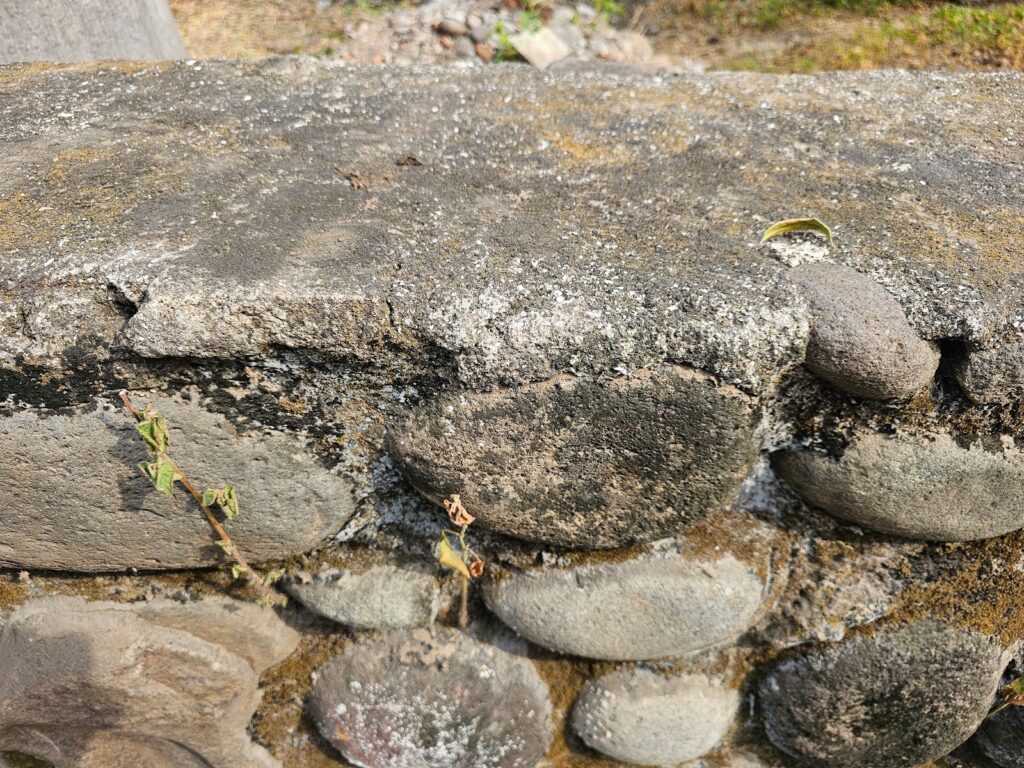
In many cases, rounded rock is often referred to as river rock. However this particular stone was collected near the ocean and its rounded shape was created by the actions of waves for thousands of years. In this particular case, it would actually be a misnomer to refer to it as river rock.
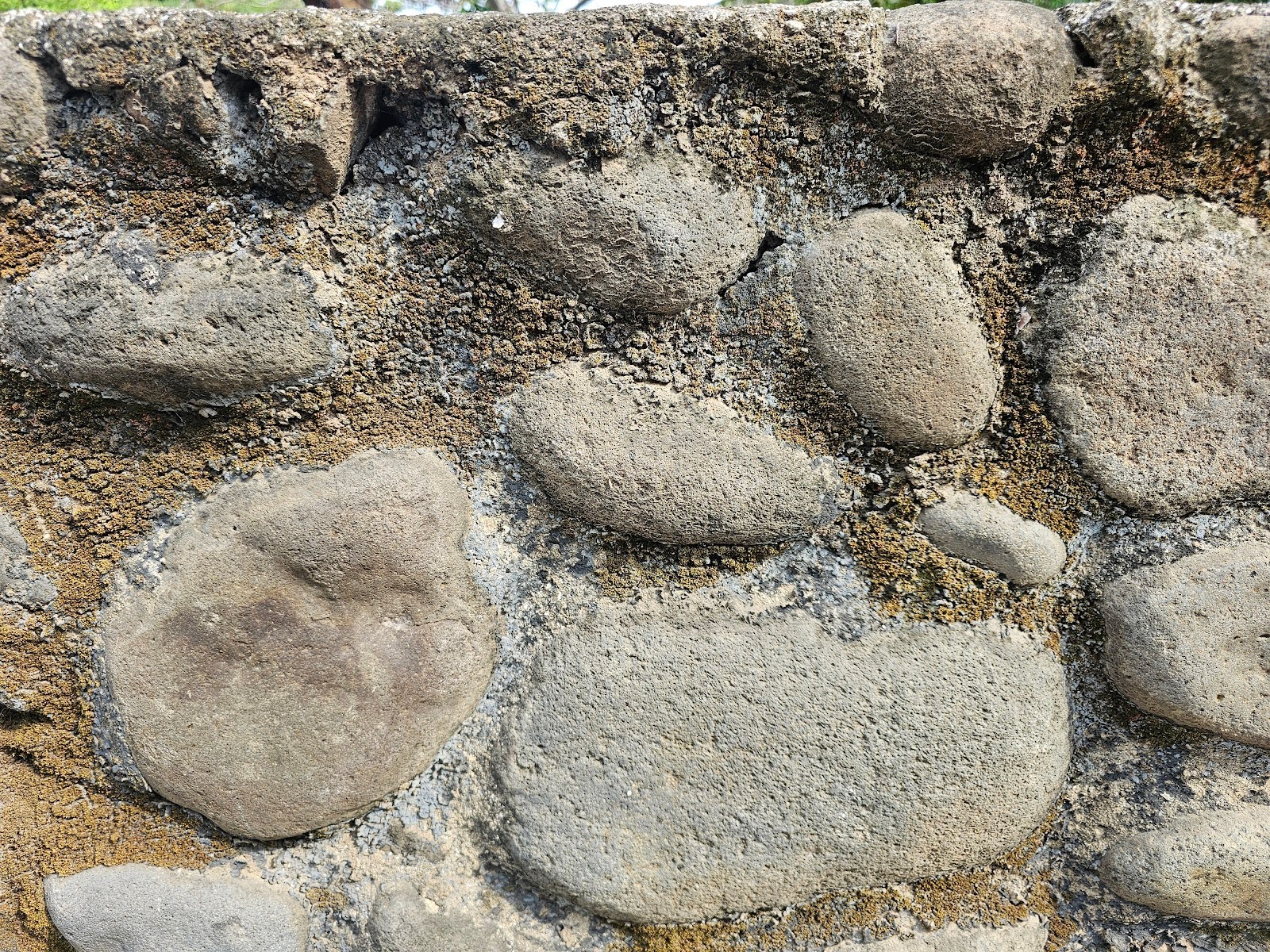
Since this particular stone wall is set out in an open area, not under an actual roof or structure, it is barely protected from rain. But here, a few things have been done to help protect the wall. In the pictures above, you can see that a relatively thin application of cementitious parging has been applied on the top of the wall like a capping or coping. Often, walls like this have actual coping stones that will be laid and set across the top of the wall.
Often coping stones will be thin and wide to have a high ratio of coverage to the amount of mortar joints. As the mortar joints deteriorate, water will still enter into the wall below, but the relatively flat and elongated surface of the stone will protect the wall below. Similar walls, ceteris paribus, without a coping or covering will deteriorate much faster. As water enters into the stones near the top, those mortar joints will deteriorate faster and then more water enter farther down, following a vicious cycle of deterioration. (Repointing or tuckpointing would help.)
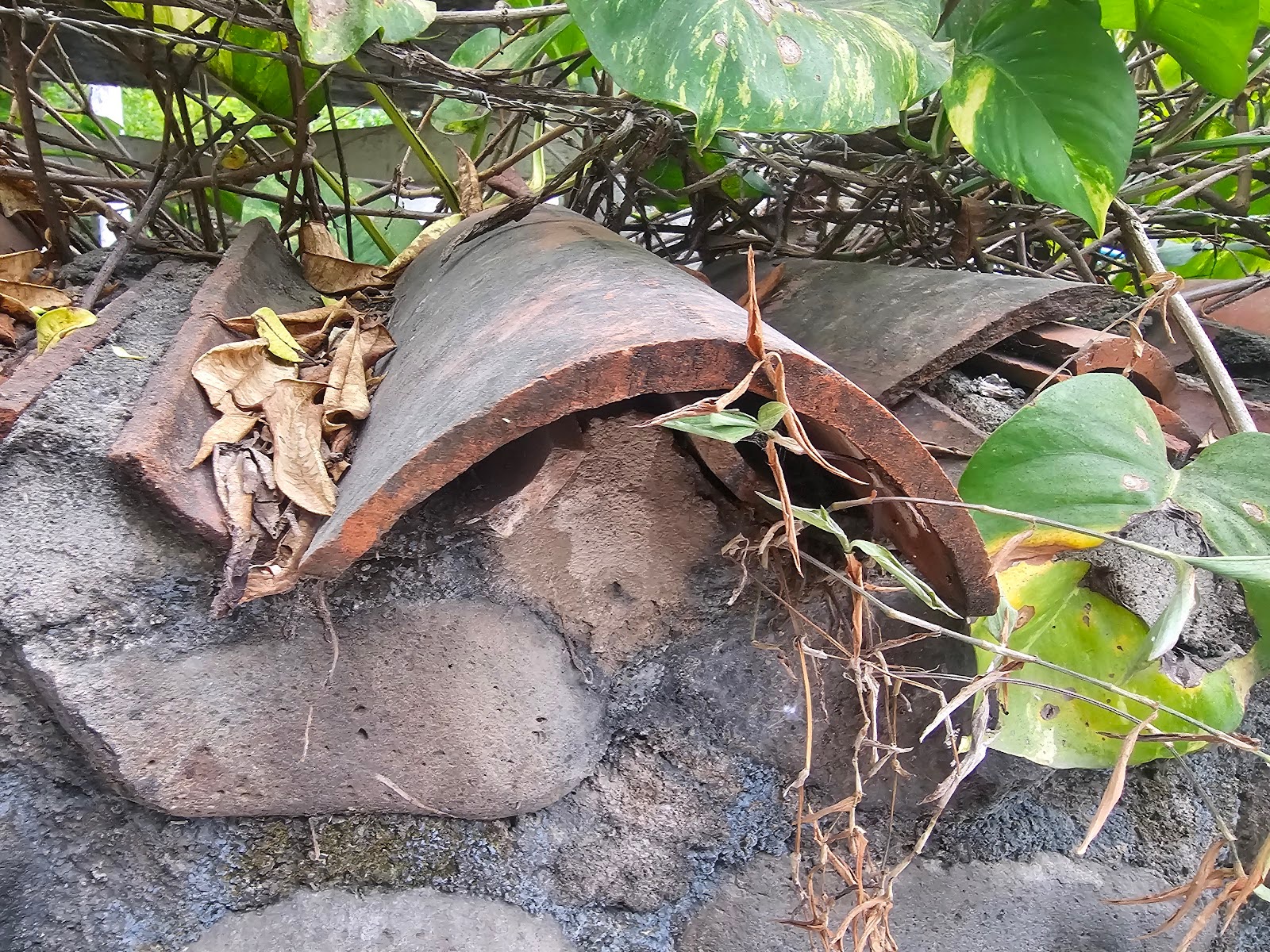
The pictures above and below here show a series of clay tiles that have been laid in an alternating overlap pattern for wall coping. Each tile is positioned so that its ends curve upward while the middle section curves downward, creating an alternating concave and convez surface.
The next tile in the sequence is then laid in the opposite orientation, with its middle section curving upward and its ends curving downward, which forms a convex surface. This creates an interlocking pattern where the upturned end of one tile meshes with the downturned middle of the next tile, and vice versa. As this pattern continues along the wall top, it forms a wave-like or undulating appearance while providing water runoff protection as the series is slightly sloped to one side to direct the rain water, overlapping to prevent water penetration at the seams.
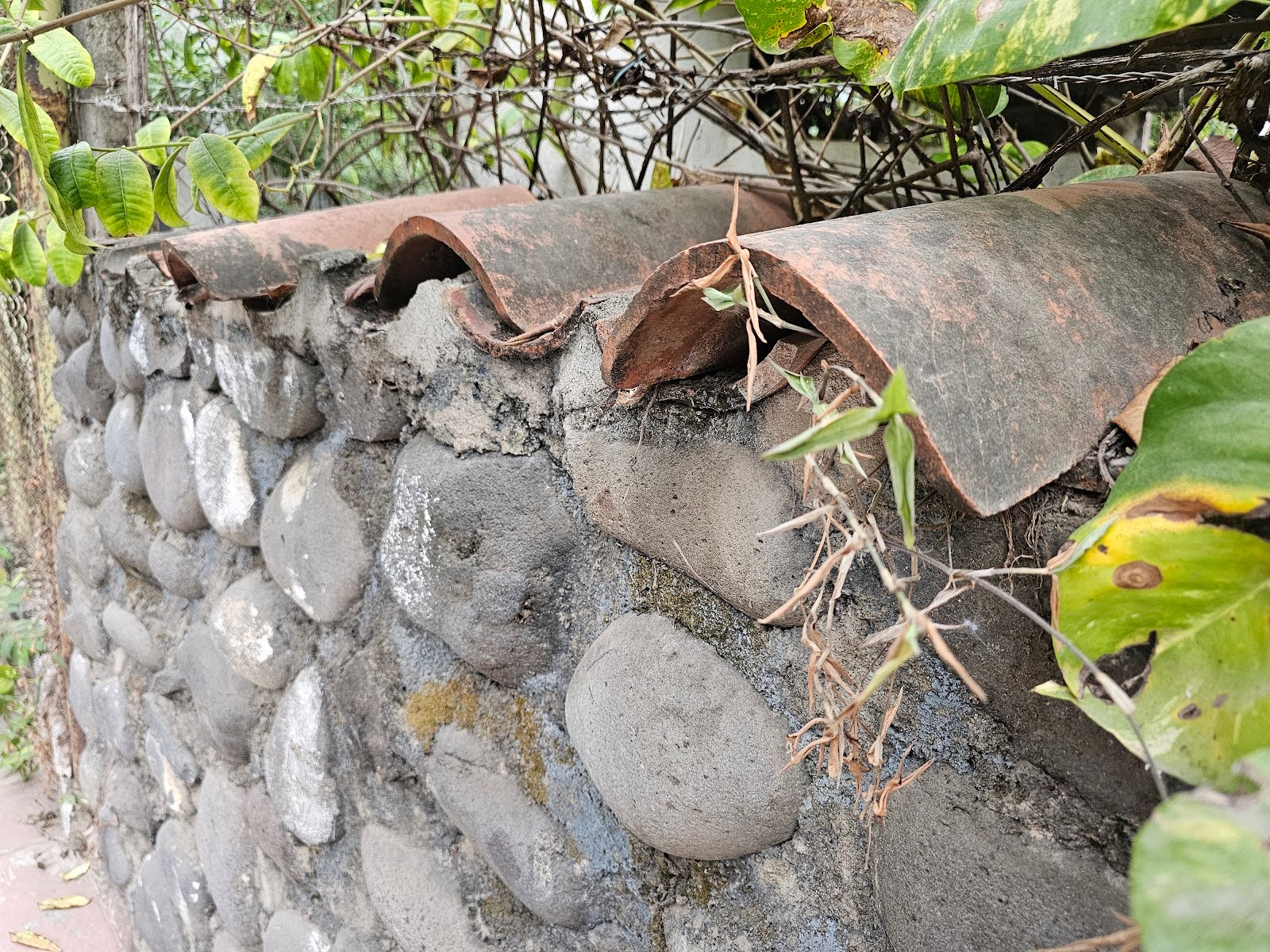
Our company, Dupont Tuckpointing and Masonry, specializes in masonry restoration, historic brick repointing, and tuckpointing services in the Washington D.C. area. These buildings are uniquely historic, and their preservation requires skilled masons who are technically trained in the best practices and knowledge of proper restoration techniques.
We understand the significance of maintaining the architectural integrity of these historic structures, and our team of experienced professionals is dedicated to delivering exceptional craftsmanship. Whether you require masonry restoration, tuckpointing, or brick repointing services, we are here to help.
At Dupont Tuckpointing and Masonry, we take pride in our work and strive to ensure that every project is executed with the utmost care and attention to detail. We are committed to preserving the rich heritage of Washington D.C.’s built environment for generations to come.
If you have any questions or needs regarding masonry restoration, historic brick repointing, or tuckpointing services, please do not hesitate to reach out to us. We would be delighted to assist you and provide you with the expertise and quality workmanship that your historic property deserves.You can reach us by telephone at (202) 796-7644 and you can reach us by email from the contact form on our website at https://duponttuckpointingmasonrydc.com/contact-us/.




